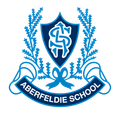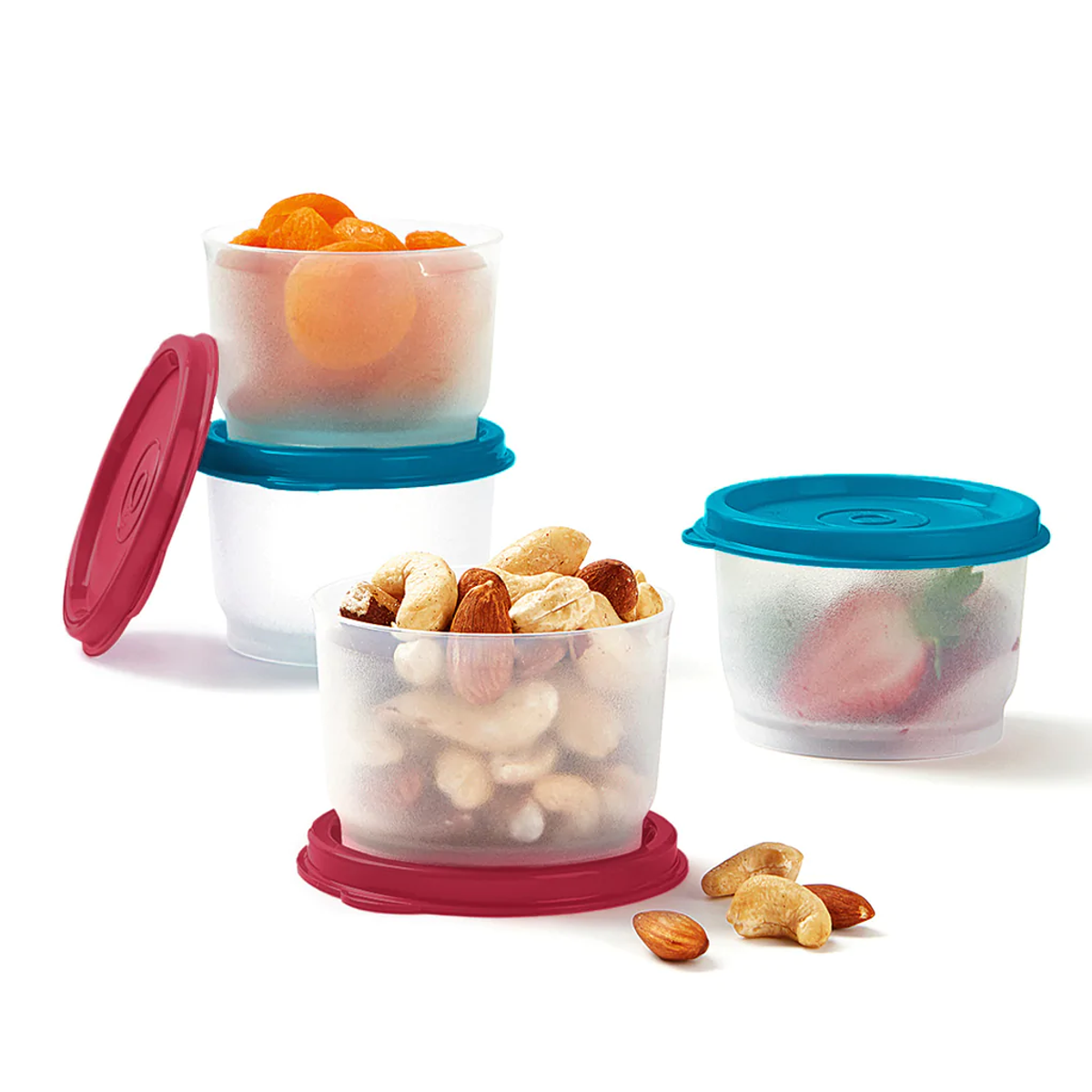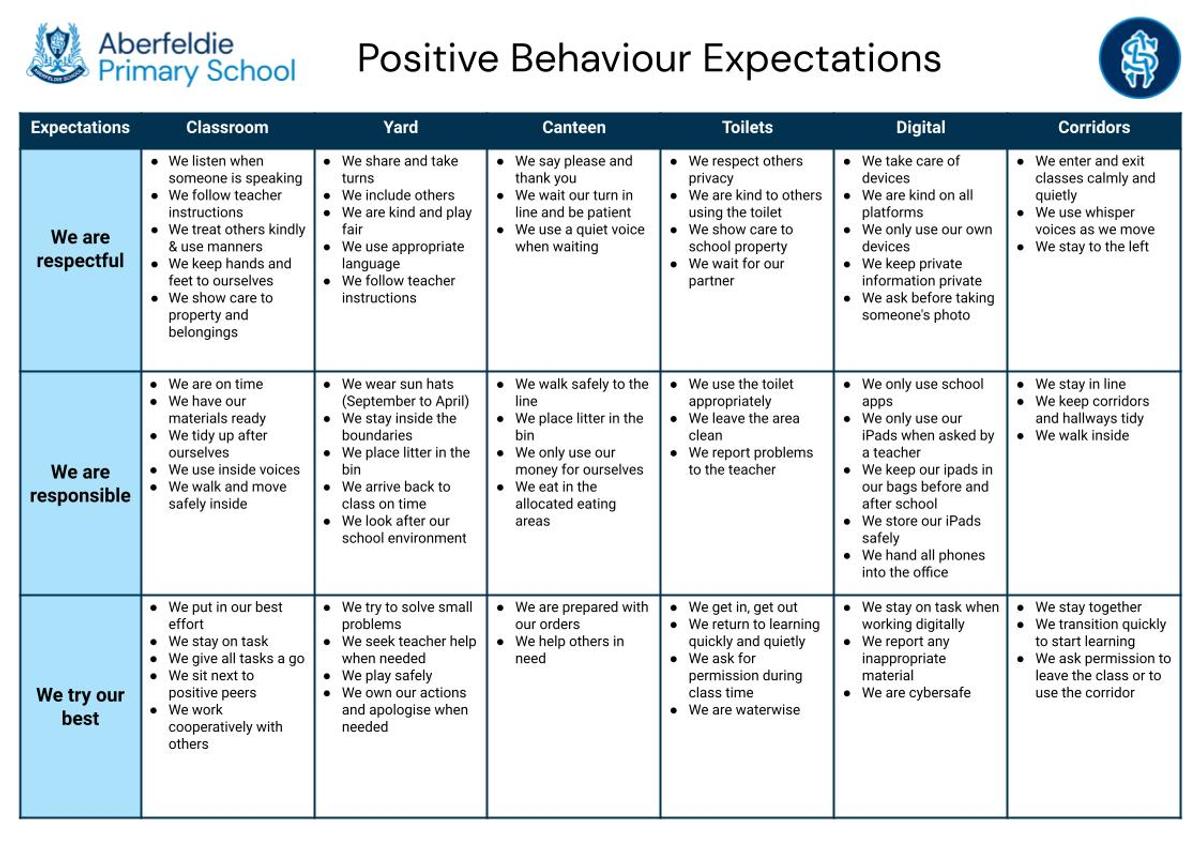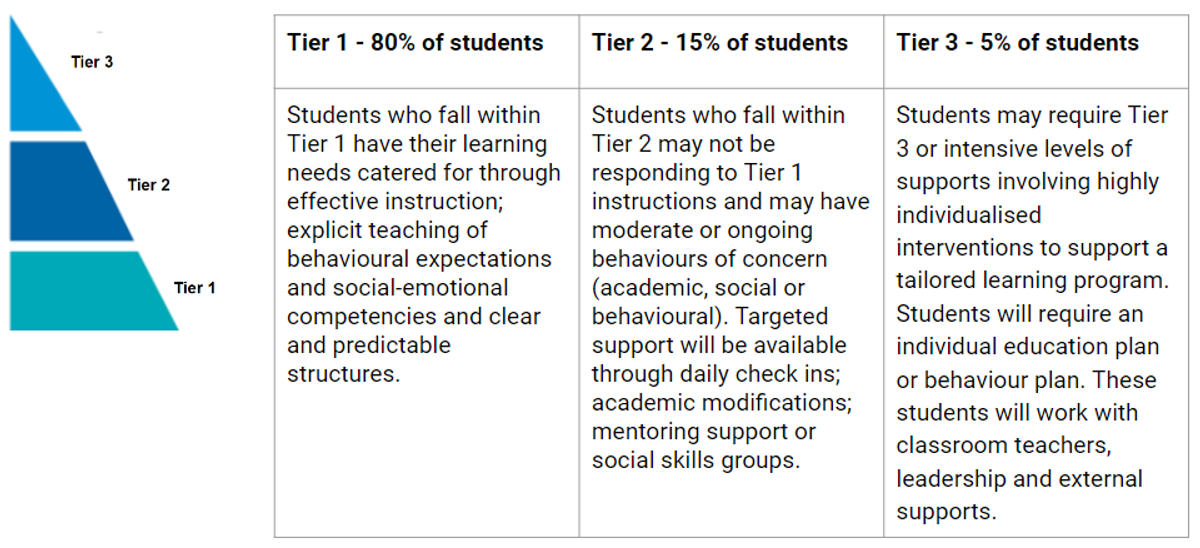Important Information
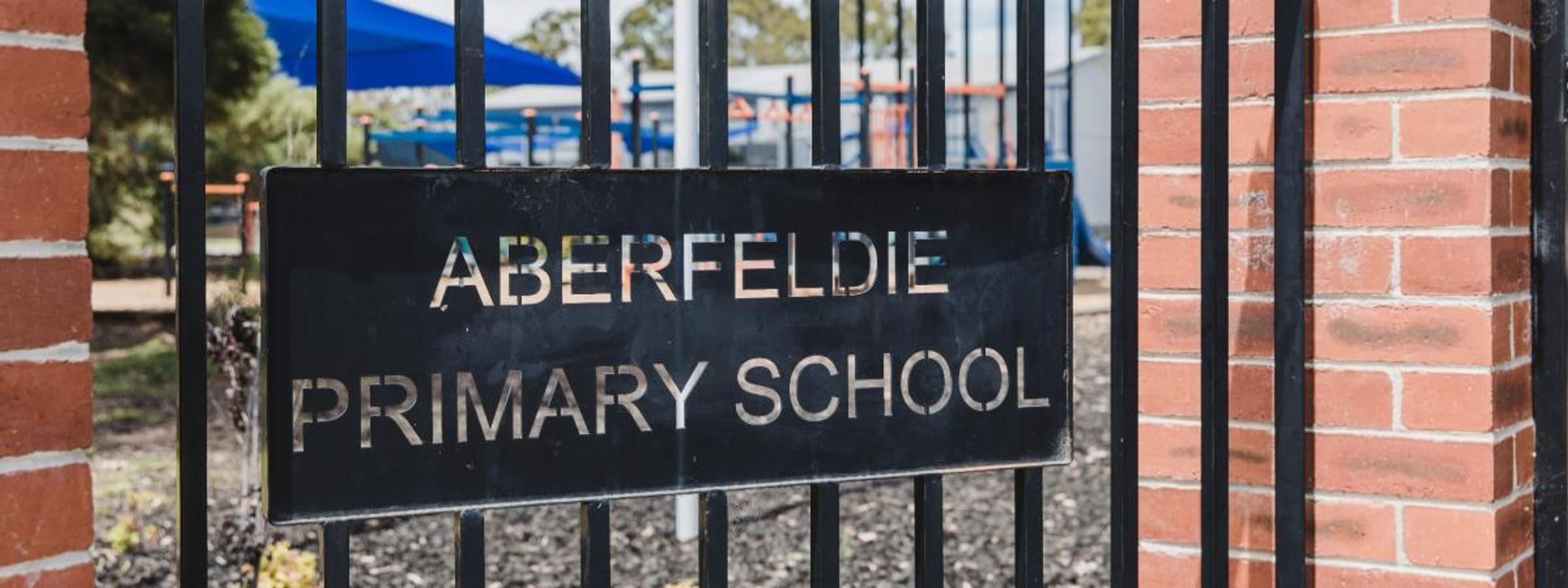
School Times & Routine:
The morning music rings at 8:54am, allowing students 6 minutes to enter their class, check in with their teacher and complete their morning routine, prior to the 9am bell. At Aberfeldie, we use the motto "when the music goes, we go". At 9am, classes launch into first session of the day. If a student arrives late, but before 9:15am, they are able to go straight to class and the teacher will update the roll attendance. After 9:15, students need to go to the office to sign in and receive a late pass.
Fruit Snack:
At approximately 10 am each morning, all students have the option to have a piece of fruit as they are learning. This year we are asking parents/carers to pack a single piece of fruit or vegetable in their child’s bag, separate from their lunch box. This may be on its own or in a small container. All students from Foundation to Year 6 place this piece of fruit on their workspace prior to 9am, along with their drink bottle and other learning materials. This procedure limits the amount of learning time lost by students needing to go to their bags and unpack their lunch boxes. All teachers have begun teaching this routine to students and will be reminding them of this procedure each morning. We thank all parents/ carers for supporting this process.
Student Mobile Devices:
Victoria is under a Ministerial order formally issued by the Minister for Education in regards to student mobile phones. Students who choose to bring mobile phones to school must switch them off and hand them into the school office before school. The office provides secure storage throughout the school day. Students are then to collect their mobile phones after the 3:30pm bell. Wearable devices, such as smart watches are excluded from the policy, however, if they are brought to school they must be switched to school mode to ensure no messages or notifications are received during school hours. For more support, please click here.
Uniform:
At Aberfeldie, we implement a Student Dress Code. The Student Dress Code has been developed by Aberfeldie Primary School’s School Council in consultation
with our school community to ensure that it respects the rights of individual students whilst reflecting the values and interests of our community. This dress code reinforces in students a pride in their own appearance, instils recognition of themselves as an integral part of the school community, and assists in developing pride in representing their school. Issues of equality, health and safety, culture, weather and expense are also factors that contribute to the establishment of the Dress Code. It is important that all community members are aware of the dress code and expectations.
Please read the full Student Dress Code Policy here.
Key information:
- All uniforms with the Aberfeldie Primary School Logo must be purchased through the approved school supplier, Noone at their retail address: 543 Keilor Rd Niddrie. Click here for Noone Imagewear Online Shopping
- Shoes of any colour are permitted (e.g. runners or leather shoes) and must have covered toes (no sandals, thongs or high heels)
- Wide brim hats must be worn between September and the end of April.
- Stud earrings and sleepers may be worn in the ears. Other than watches, this is the only jewelery permitted.
- We strongly discourage nail extensions due to the health and safety concerns when engaging in frequent Physical Education and school sports. If deemed a risk, students may not be able to have full participation in some sports. We also discourage nail varnish, especially for those participating in Cultivating Communities, as it can contaminate food when harvesting and cooking.
- Please clearly label all of your child's belongings, including spare clothes.
Please reach out to Erin McNamara, the Acting Assistant Principal, if you require support in accessing uniform items.
School Communication:
Communication is one way that we build strong connections with the school community. Communication at APS includes:
- Compass (all formal communication)
- Seesaw
- Newsletter (via Compass)
- Phone call (office)
- Website
Compass is a school management platform used by teachers and families for formal school news, events, payments, newsletters and any other formal communication. Compass is used for:
- attendance/absences
- school newsletters
- semester reports
- booking parent teacher conferences
- incursion/excursion/event consent and payments
- school calendar
- family contact details
- sending emails to teachers & school staff
Parents/ carers need to regularly check Compass for consent and payments and all due dates will be adhered to. Compass has a smartphone app and can be accessed on any web browser. We also have a compass link on our website.
Seesaw is a learning platform used by students, teachers and parents/ carers to capture and share what is happening in the school and in classrooms.
Seesaw is used for:
- sharing announcements and photos of learning & what is happening in the classroom.
- students documenting and sharing their learning.
- contacting class teachers via the messaging feature.
Parents/carers are encouraged to check Seesaw, but it is not expected, therefore any notifications that all parents must view, will go on Compass. Seesaw can be accessed via the Seesaw app or web browser. Teachers will send invites to join the class Seasaw over the coming weeks.
School Routines & Expectations
This year we have joined the Department of Education’s School-Wide Positive Behaviour Support initiative (SWPBS). SWPBS is a framework that brings together school communities to develop positive, safe, supportive learning cultures. It assists schools to improve social, emotional, behavioural and academic outcomes for children and young people. With SWPBS implemented, teachers and students have more time to focus on relationships and classroom instruction. Students benefit from:
- increased respectful and positive behaviour
- increased time focused on instruction
- improved social-emotional wellbeing
- positive and respectful relationships among students and staff
- increased adoption of evidence-based instructional practices
- a predictable learning environment with improved perceptions of safety and increased attendance
Throughout Term 4, we worked collaboratively with our SWPBS coach, to establish new school expectations. This involved a range of professional learning on the evidence and research behind expectations and their wording. From this research, staff established 3 key expectations that cover all settings, at all times. These are:
- We are respectful
- We are responsible
- We try our best
From the training provided, staff then created a matrix of expected behaviours for each key setting. Every dot point is clear, observable, measurable, positively stated and uses age-appropriate vocabulary. You will notice this matrix, along with setting specific posters, in all classrooms and across the school. This is the language that will be used by all staff, at all times, throughout the school year and into the future.
Across Week 1, every classroom and teacher has been explicitly teaching these behaviours skills as they would academic skills. This teaching will continue throughout the next few weeks and then routinely throughout the year. Teachers will continue professional learning, training and coaching throughout the term and year. Over the next few weeks, we will be calling for parents/carers to be part of our SWPBS implementation team. We look forward to updating you as we move forward in the program.
Disability Inclusion Model:
This year, our school will begin introducing some changes to help us strengthen support for students with disabilities. The tiered funding model and Disability Inclusion Profile are being introduced through a staged roll-out over five years and all government schools will transition to Disability Inclusion by 2025.
Disability Inclusion will help our school better understand what our students need to help them learn and participate at school. It involves:
- a new Disability Inclusion Profile and school funding model to strengthen support for students with disability
- more resources, training and coaching for our teachers and school staff about the best ways to support students with disability.
Over the coming months, the Disability Inclusion Profile will be available to help us identify the strengths, needs, and educational adjustments we can make to assist students with disability and additional learning needs. The Disability Inclusion Profile replaces the Program for Students with Disabilities (PSD) application process.
Over the coming years, we will invite families of students who are currently part of the PSD, and other students with disability and additional learning needs, to participate in a meeting to complete a Disability Inclusion Profile.
We will use new school funding and supports for more training and professional development for teachers and school staff, expert advice about disability, teachers and other staff to help plan and deliver changes for students, and resources to support learning.
The new Disability Inclusion approach ensures our school is better able to support students with disability and additional learning needs.
Aberfeldie Primary School is excited to be part of Disability Inclusion and we look forward to continuing to support our students to learn and thrive.
For further information, please click this link and watch the first video, ‘What Disability Inclusion involves’.
If you have any questions about your child’s learning or Disability Inclusion, or need translation or interpreting assistance, please contact Emma Beckett or Erin McNamara.
